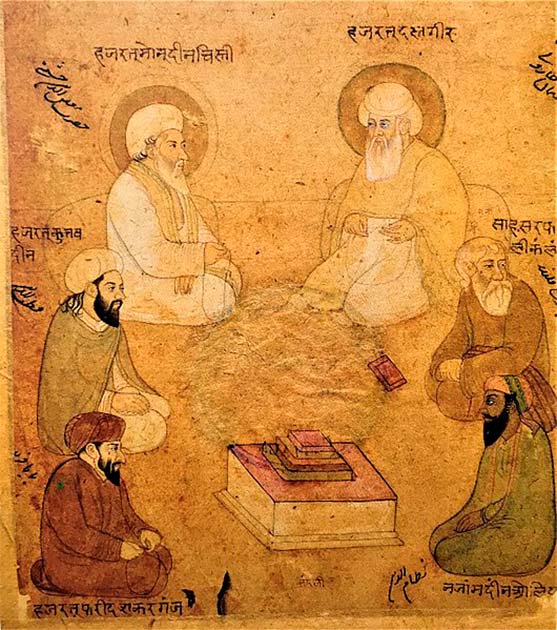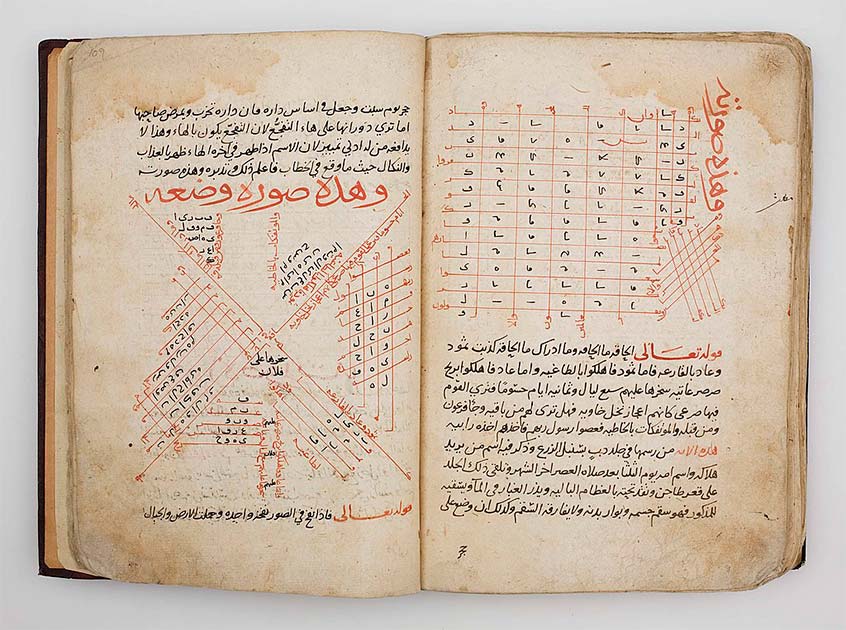Books which stir up controversy in the religious world are nothing new. But few have perhaps caused quite so much as the Shams al-Ma’arif, an Arabic tome dating back hundreds of years.
Why is it so controversial? Well, the book promises to provide readers with secret divine knowledge, giving them a way to communicate with supernatural beings and create magical charms and amulets.
Many consider this knowledge to be occult. This grimoire has captured the imaginations of countless truth seekers and enthusiasts of the years and is still widely read today. Do we dare take a look inside?
Grimoire of Forbidden Knowledge
The Shams al-Ma’arif, also known as the “The Sun of Knowledge,” is an ancient Arabic grimoire that dates back to the 13th Century AD. The book is a remarkable compilation of magical practices, rituals, and esoteric wisdom.
For its defenders, it is a spiritual manual that helps readers become closer to God via the revelation of divine secrets. To its detractors, it’s a collection of sacrilegious dark magic that lures its readers away from God’s light.
The book is defined by its mystic approach to Islam and was written by a Sufi scholar. Sufism, a more spiritual and mystical offshoot of traditional Islam emphasizes the inner, experiential, and direct connection with the divine.

Sufi followers often seek to attain a deeper understanding of the teachings of Islam through practices like meditation, contemplation, and asceticism. Sufism places a strong emphasis on the pursuit of spiritual enlightenment, self-realization, and a profound connection to the Divine.
In Suffi tradition the Quran and other Islamic texts hold secret meanings that are missed by surface-level readings. This means the Sufi spend a lot of time analyzing their holy books, deriving as much meaning from them as they can. They take nothing at face value.
- Practical Magic: The Summoning Spells of The Book of Abramelin
- Enochian: John Dee, Magic, and the Language of God
Sufism takes the same approach to Islam’s 99 names of God, also known as the Asma as-husna. Each name describes one of Allah’s many divine attributes, for example, “Ar-Rahman”, the merciful, and “Al-Khaliq”, the creator.
For the Sufi, each name also holds a different spiritual power that can be accessed via meditative chants called dhikr. The Shams al-Ma’arif takes this one step further and is a treatise on the properties of each of Allah’s names. It claims reciting the different names in certain ways can grant believers access to divine powers and magics.
The book’s author wrote that these invocations are what enabled certain miracles within Quranic history, like bringing the dead back to life or various prophets’ abilities to speak directly with Allah. None of this has ever been particularly controversial and lines up nicely with mainstream Sufi beliefs.
However, some of the contents of the book have been extremely controversial. Various Islamic scholars have claimed that the book takes things too far, verging and crossing over into the occult.
Magical Contents
In its contemporary form, the book is made up of two volumes, the Shams al-Ma’arif al-Kubra[b] and Shams al-Ma’arif al-Sughra. Within the first few chapters, the author introduces readers to the idea of magic squares and how certain combinations of numbers and the alphabet can have magical effects. According to the text, these are the only ways to communicate with jinn (genies), angels, and spirits.
Where the book has been accused of entering the realms of the occult however is with its how-to guides on making talismans using the names of God. The book covers charms, amulets, and talismans that can do everything from helping grow crops to increasing wealth and finding true love.
It’s easy to see why some Islamic scholars might have a problem with people using God’s name to become wealthy/ seduce someone. The book seems to encourage the seeking of material gain through the use of divine intervention, and that is problematic.

Most of the book was written by one Sufi scholar, Ahmad al-Buni. Al-Buni wrote it while living in Algeria at some point before his death in 1225 AD. He was known for his profound contributions to various esoteric disciplines. Born in the 13th century, al-Buni was a polymath who delved into astrology, magic, and spirituality.
Little else of fact is known about al-Buni with Shams al-Ma-arif being his most famous work. Unfortunately, most of what is known about him was written by his detractors.
By the 14th century, his fellow scholars like Ibn Khaldun and Ibn Taymiyya had declared al-Buni as a heretic. They described his work as sihr (magic) and described him as a deluded devil worshipper.
This doesn’t mean he didn’t have his supporters. During his lifetime many considered him a Sufi master. He lived in an era when mysticism was still popular among many Muslims. What later scholars denounced as magic he and his contemporaries saw as studying secret knowledge in an attempt to become closer to God.
Practical Magic
Unsurprisingly, its supposed connection with the occult means that the Shams al-Ma-arif has long been surrounded by urban legends and myths. Many of them are negative.
The most famous example is a story that has become incredibly popular on online forums and message boards. It tells how a Saudi man read the book and was tempted into marrying a female jinn. This jinn then kills his human wife and the rest of his family.
In South Asian countries though the stories tend to be much more positive. It’s common to see charts taken from the book posted in shop-front windows in the hope they’ll attract customers or bless the shop with more business.
It’s also common for quotes from the book to be engraved into divination bowls with worshippers believing that water drunk from the bowls can help cure the sick. Some visit Sufi leaders, known as pirs, in the hopes of being cured, finding a spouse, or increasing their wreath. These pirs often use charms and amulets from the teachings of the Shams al-Ma’arif.
Today the book is just as controversial as it’s always been, but this doesn’t mean it isn’t also popular. Its first English translation was published online in 2022 with a view to “assisting those unfamiliar with Islamic magic and culture”. Besides Arabic, the book has also been published in Urdu and Turkish.
To some, it is a book of black magic and for others, it is a book that encourages people to become closer to God and find spiritual healing. For many without a religious leaning, it is simply an interesting curiosity. For historians, it is a deeply fascinating insight into a time when Islam and mysticism were much more deeply entwined.
Top Image: Plate from the longest surviving version of the Shams al-Maarif. Source: Khalili Collections / CC BY-SA 3.0 igo.